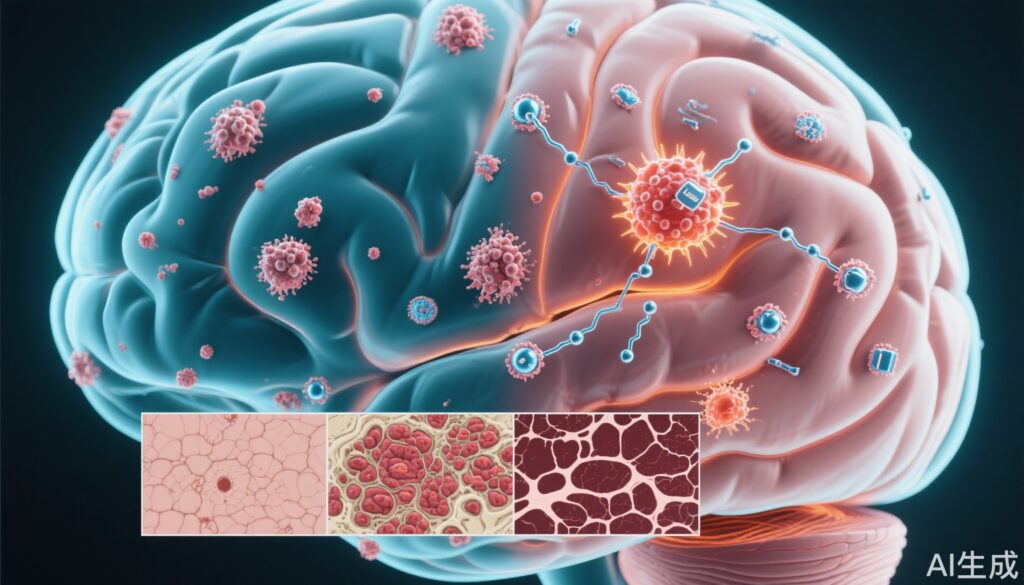Highlights
- Groundbreaking Nature study reveals brain lithium deficiency is linked to Alzheimer’s disease (AD) onset.
- Lithium orotate supplementation reverses memory loss and brain pathology in AD mouse models, unlike traditional lithium carbonate.
- Lithium orotate is less likely to be sequestered by amyloid plaques and shows no observed toxicity in long-term animal studies.
- Potential implications for AD treatment and broader neuropsychiatric applications, pending human clinical trials.
Study Background and Disease Burden
Alzheimer’s disease (AD) is the most prevalent neurodegenerative disorder, accounting for 60–80% of dementia cases worldwide. AD leads to progressive memory loss, cognitive impairment, and eventual loss of independence. The disease typically follows a decade-long prodromal phase marked by mild cognitive impairment (MCI) before the full manifestation of dementia. Currently, approximately 10% of individuals over 65 are affected by dementia, posing a significant healthcare challenge with over 55 million global cases.
Despite recent advances, AD remains incurable. The US FDA has approved two monoclonal antibody therapies targeting beta-amyloid (Aβ) plaques—hallmarks of AD pathology. These treatments, while innovative, offer only modest slowing of disease progression and carry risks of serious brain injury. The urgent need for alternative, safer, and more effective therapeutic strategies has spurred research into novel mechanisms and interventions.
Study Design
Published on August 6, 2025, in Nature, Harvard Medical School’s Bruce Yankner and colleagues conducted a series of translational experiments spanning human brain tissue analyses and AD mouse models (Aron L et al., Nature, 2025). The research included:
- Quantification of lithium levels in distinct regions of human brains from AD patients, MCI individuals, and healthy controls.
- Assessment of lithium content in AD mouse brains, with comparisons to non-affected regions and controls.
- Therapeutic intervention studies using different lithium compounds: lithium carbonate versus lithium orotate.
- Endpoints: cognitive performance (memory tests), histopathological changes (amyloid plaques, tau tangles), gene expression signatures, and safety/toxicity profiles.
Key Findings
The Nature study provides compelling evidence for the role of lithium in AD pathogenesis and its therapeutic potential:
- Brain Lithium Deficiency in AD: Lithium, a naturally occurring trace element, was found to be significantly lower in brain regions affected by AD compared to unaffected areas. In MCI (prodromal AD), amyloid plaques sequestered lithium, reducing its bioavailability and exacerbating functional deficits.
- Pathological Cascade: In AD mouse models, lithium deficiency correlated with increased amyloid plaque formation, setting up a vicious cycle—lower lithium levels promoted more plaque accumulation, which further depleted lithium from surrounding tissue. This was also linked to increased tau pathology and disease-related gene expression changes.
- Lithium Orotate versus Lithium Carbonate: Traditional clinical trials have largely focused on lithium carbonate, which is easily sequestered by amyloid plaques. In contrast, lithium orotate, a form less prone to ionization and capture by plaques, maintained bioavailability. Low-dose lithium orotate supplementation in AD mice reversed cognitive deficits and brain damage, while lithium carbonate showed minimal effect. This mechanistic difference may explain past inconsistent clinical trial outcomes.
- Mechanistic Insights: Lithium orotate supplementation appeared to restore microglial clearance of Aβ, reduce further plaque formation, and protect against tau aggregation, preserving memory and cognitive function in both AD and aged mice.
- Safety Profile: Crucially, chronic administration of lithium orotate at low doses showed no detectable toxicity in mice—even after almost a lifetime of exposure. This safety data is pivotal for designing future human trials.
- Potential for Broader Application: The study noted that even in cognitively normal individuals, higher brain lithium levels correlated with better memory scores. This suggests possible preventive or cognitive-enhancing roles for lithium supplementation beyond AD, including bipolar disorder patients where lithium slows brain aging.
Expert Commentary
The implications of these findings are considerable. Lithium has long been known for its psychiatric uses, particularly in bipolar disorder, but its neuroprotective effects have remained controversial due to inconsistent clinical trial data and concerns about toxicity. The mechanistic distinction between lithium carbonate and lithium orotate, as demonstrated in this study, could be transformative for clinical practice.
However, several limitations must be acknowledged. The main findings stem from animal models and post-mortem human brain analyses; prospective, placebo-controlled clinical trials in humans are essential to validate efficacy and safety. The optimal dosing, duration, and patient selection criteria for lithium orotate therapy remain to be defined. Additionally, long-term effects in diverse patient populations, especially the elderly or those with renal impairment, require careful monitoring.
Conclusion
This landmark Nature study introduces a promising new therapeutic target for Alzheimer’s disease: restoring brain lithium levels, specifically with lithium orotate. If future clinical trials confirm these findings, lithium orotate could revolutionize AD management by not only slowing progression but potentially reversing some cognitive deficits. The absence of significant toxicity in animal models further supports its translational potential. Given the global burden of dementia and the limited efficacy of current therapies, this research opens an exciting new chapter in neurodegenerative disease treatment.
References
Aron L, Ngian ZK, Qiu C, Choi J, Liang M, Drake DM, Hamplova SE, Lacey EK, Roche P, Yuan M, Hazaveh SS, Lee EA, Bennett DA, Yankner BA. Lithium deficiency and the onset of Alzheimer’s disease. Nature. 2025 Aug 6. doi: 10.1038/s41586-025-09335-x.
Additional references for context:
– Cummings J, et al. Alzheimer’s disease drug development pipeline: 2023. Alzheimer’s Dement. 2023;19(1):211-232.
– Hampel H, et al. The future of Alzheimer’s disease: clinical trials and treatments. Nat Rev Neurol. 2021;17(7):377-388.


